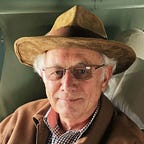Costa Rica: First Impressions
A Photo Essay
Story and photos by David Laws
Pura vida, translated literally as “the simple life” in English, is the unofficial motto of the country and may be the most frequently used phrase in everyday Costa Rican Spanish. It represents an attitude that encourages the celebration of life in the moment by a country that abolished its army in 1949 and invested in the welfare of its people to achieve one of the highest standards of living in Latin America.
Based on the nearly thirty percent of the country that is protected as national parks, reserves, and wildlife refuges, eco and adventure tourism is Costa Rica’s most important source of income today.
Following are some images from my first trip to this colorful, fascinating, and friendly country in early 2023. My tour took me from the sultry mangrove forests of the Caribbean coast, over the Cordillera Central, which contains four of the most active volcanoes in the Pacific Ring of Fire, to the bracing palm-fringed beaches of the Pacific Ocean.
Following a road trip from the capital, San Jose, we reached Tortuguero National Park in skinny, flat-bottom boats cruising along natural and man-made canals through roadless mangrove forests. This protected area within the Caribean wetlands hosts a rich biological diversity and a variety of habitats that support threatened flora and fauna species.
Tortuguero village is a remote, predominantly Afro-Caribbean community of about 1,200 people descended from the indigenous Zambo-Miskito people and former slaves from Jamaica. The residents have learned that protecting their beach for breeding green turtles is more rewarding financially than exploiting its natural resources. Access to nesting sites is strictly controlled by the Sea Turtle Conservancy, the world’s longest-running sea turtle conservation program.
Bananas remain the most important agricultural crop of Costa Rica, but the country is becoming increasingly known for fine dark chocolate and premium coffee.
Always ingenious, as those with fewer resources must be, Costa Ricans make practical use of everyday resources. Coffee beans are weighed as they arrive at the Espiritu Santo Coffee roasting factory in Naranjo with a local version of the ancient abacus counting device. Eco-friendly, green pasture fences grow from stakes thrust into the ground. A chair is made from used automobile tires.
Ficus costaricana is known as the strangler fig for its habit of growing around the trunk of another tree and starving it of moisture and nutrients. Eventually, the host tree dies and rots away, leaving a hollow tangle of roots up to 6o feet high.
La Fortuna de San Carlos emerged as a popular tourism hub for its rugged volcanic landscape and hot springs after the 1968 eruption of Mount Arenal, Costa Rica's most active volcano. Guides claim that fewer than ten percent of visitors ever see the crater's rim unobscured by clouds — our clear view lasted for less than five minutes.
Oxcarts built for everyday hauling tasks were originally decorated with fresh flowers for parades and festivals. The tradition of painting the carts so they were permanently colorful grew into an important source of income for the artists of Sarchi and a national symbol of Costa Rica.
The Pacific Coast has its own distinctive wildlife and landscape features but is best known by most visitors for sparkling white sand and destination resorts. Turquoise water and rainforest-fringed, soft sand beaches have earned Manuel Antonio National Park a place among the top 25 in the world; those along the Rio Grande de Tarcoles are somewhat less inviting!
My Costa Rica: A World of Nature tour was operated by Collette Travel Services and booked through Pacific Grove Travel. Our tour manager and guide was Guillermo Ayub. Guillermo’s irrepressible sense of humor and deep knowledge and love of his country perfectly personifies the national spirit of pura vida.
